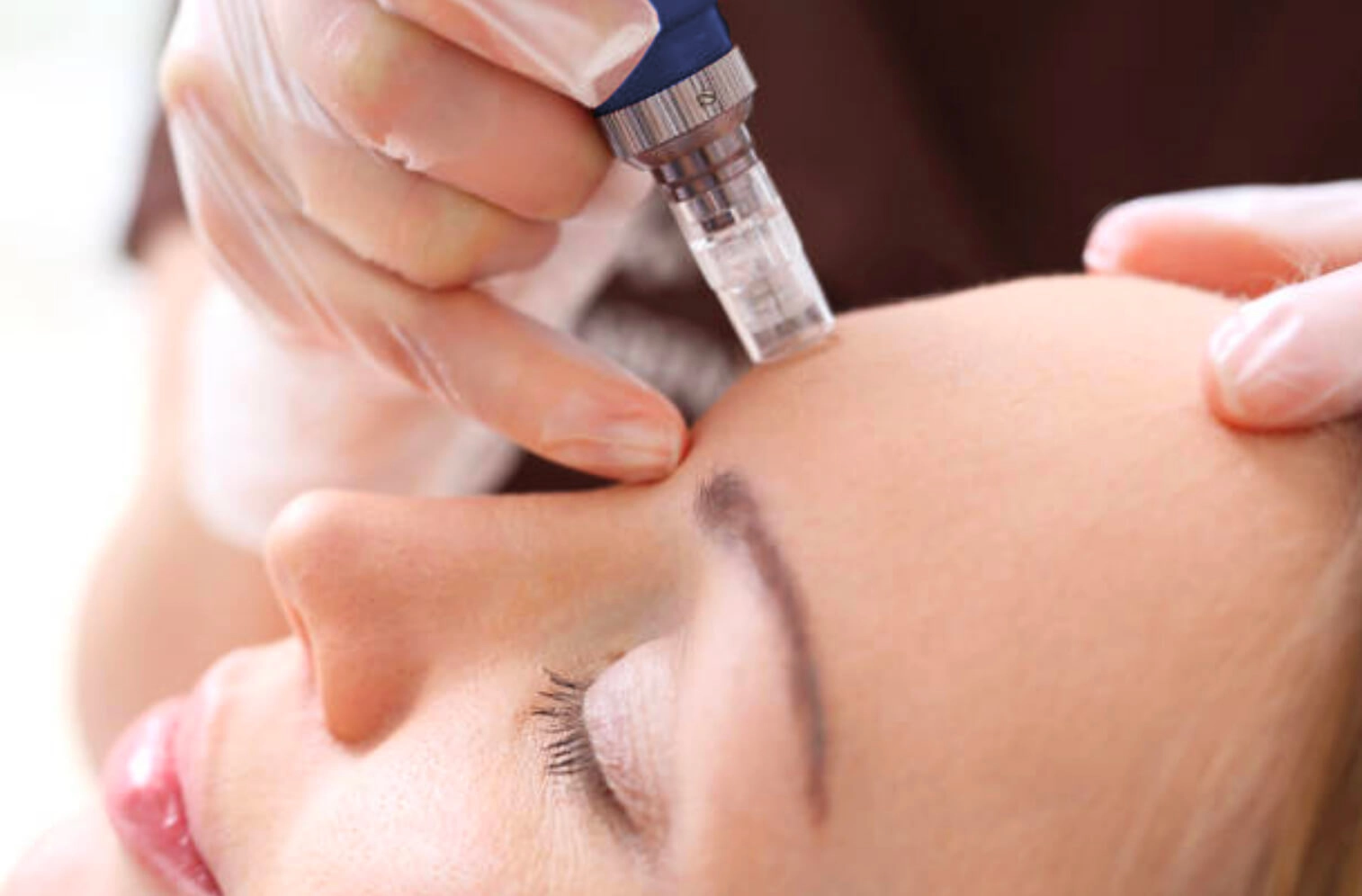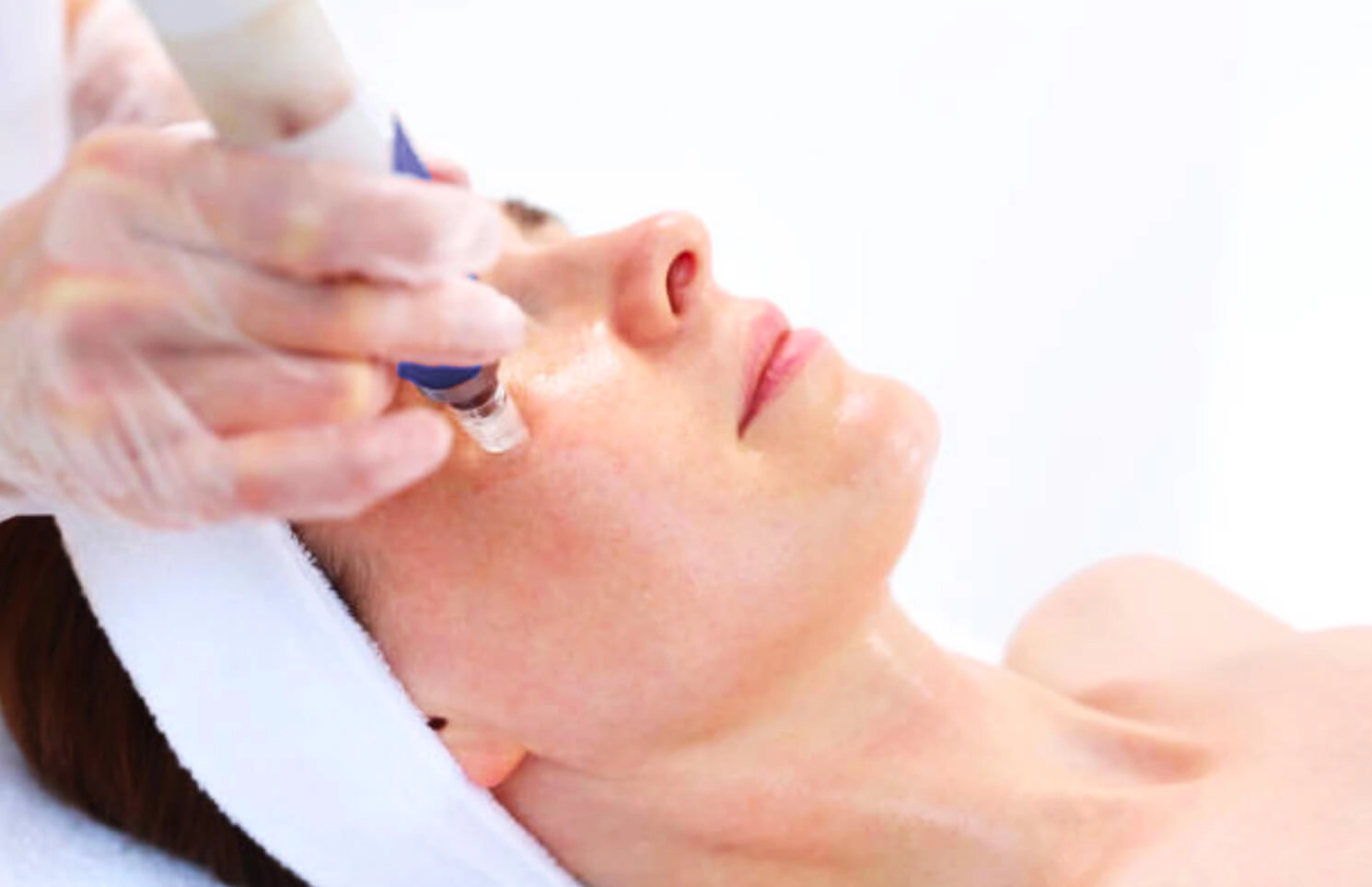
Revitalize your skin at Dermapure Saskatoon with Microneedling. This effective treatment stimulates your skin’s natural healing process by creating micro-channels, boosting collagen and elastin production. It is ideal for reducing fine lines, scars, and uneven skin texture, delivering a smoother and more youthful appearance.
At Dermapure clinics nationwide, advanced technologies like SkinPen and Morpheus8 provide safe and effective microneedling treatments. For those seeking additional benefits, RF Microneedling integrates radiofrequency energy to enhance results, promoting deeper skin rejuvenation and tightening. Visit Dermapure Saskatoon to achieve a glowing complexion.
At Dermapure, microneedling is performed by a team of highly qualified physicians, nurses, and skin experts, all dedicated to delivering exceptional results. Our professionals bring a wealth of knowledge and training to ensure a safe and effective treatment. We follow a philosophy focused on achieving a natural look, offering customized cosmetic procedures that address various skin concerns, including fine lines, wrinkles, acne scars, and more.
Before beginning the microneedling treatment, we conduct a thorough assessment to understand your skin’s condition and your specific expectations. This initial consultation allows us to evaluate your needs in detail and develop a customized treatment plan tailored to achieve the best possible results.
Capturing pre- and post-treatment photos is a crucial step in the microneedling process. These images provide a visual record of your skin's condition before and after each session, helping you track progress and evaluate the effectiveness of the treatment over time. This allows you to clearly see the long-term results and gain a better understanding of how the treatment is benefiting your skin.
Thoroughly cleansing the skin to remove any gel, makeup, and oil is essential before microneedling. This step ensures that the skin is free of impurities and creates a clean, sterile surface for the procedure. Proper disinfection is crucial for preventing any risk of infection and ensuring the best possible results from the treatment.
To minimize discomfort during the microneedling procedure, a lidocaine-based numbing gel is applied to the clean skin. This anesthetic gel is left on for approximately 45 minutes to effectively desensitize the area and ensure a more comfortable treatment experience.
During the microneedling treatment, a single-use tip is applied to the skin with light pressure. The needles create micro-injuries that trigger your body's natural repair process. The technician ensures controlled and precise movements, overlapping each pass to cover the entire treatment area thoroughly without any gaps. For areas with more pronounced concerns, a second pass may be performed to enhance results. After the 45-minute application of topical anesthesia, the treatment itself typically takes between 30 to 90 minutes, depending on the area being addressed.
Treatment prices vary based on your individual needs and the specific procedure performed. To learn more about pricing, we invite you to contact your clinic or schedule a consultation with our experts.

After your initial microneedling series, which is usually spaced about 3 to 4 weeks apart, ongoing maintenance may be recommended to sustain and enhance your results. The exact number and frequency of follow-up treatments depend on your skin condition and individual goals. Typically, clients may need additional sessions every 6 to 12 months to maintain their rejuvenated skin. Regular follow-up ensures your skin continues to benefit from the treatment, providing long-lasting improvements in texture, tone, and overall appearance.
Microneedling is not recommended for individuals with hemophilia, active acne, rosacea, solar keratosis, autoimmune disorders, or those on long-term steroids, anticoagulants, or chemotherapy. Avoid microneedling if you have nickel allergies, scleroderma, or a compromised skin barrier. Consult a healthcare provider if you have heart disease, hypertension, insulin-dependent diabetes, or recent cancer treatments. Always review your medical history and conditions with your healthcare provider to ensure microneedling is appropriate for you.
Microneedling is a versatile treatment that can be used on various parts of the body, depending on the platform being used. The procedure is effective on the face, including sensitive areas such as the lower eyelids, as well as the neck and décolleté. It can also be applied to other areas like the arms, abdomen, thighs, and knees. Each area can be treated to address specific skin concerns, such as texture irregularities, scars, or signs of aging, with the treatment being tailored to the sensitivity and needs of the targeted zone.

Shop our products for an enhanced beauty routine!
Visit The Online StoreCommon side effects include redness, swelling, and minor discomfort similar to a mild sunburn. There may also be slight bruising or pinpoint bleeding immediately after the treatment. These effects typically resolve within a few days.
Microneedling is effective for treating various skin conditions by stimulating the body's natural collagen production. This treatment can address:
At-home microneedling devices, including dermal rollers, can offer some benefits, such as improving skin texture and enhancing the absorption of skincare products. However, they are generally less effective than professional treatments due to their lower needle depth and precision. Professional microneedling, performed by a trained healthcare provider, uses advanced equipment with adjustable needle depths, typically ranging from 0.5 mm to 3 mm. This allows for more precise and effective treatment. Consulting with a healthcare provider ensures that you receive the most appropriate and effective microneedling treatment tailored to your specific needs.
To ensure optimal results from your microneedling treatment, it’s essential to properly prepare your skin. Begin by discontinuing the use of retinoids, exfoliants, and any products containing acids at least one week before your session. These products can increase skin sensitivity and may interfere with the healing process. Additionally, avoid taking anti-inflammatory medications such as ibuprofen, as they can affect the skin's natural inflammatory response, which is crucial for rejuvenation. Ensuring your skin is free of active infections or irritations is also vital. Always follow any additional specific instructions provided by your healthcare provider.
After your microneedling treatment, proper aftercare is crucial for achieving the best results and ensuring a smooth recovery. Here are the essential steps:
Yes, microneedling is generally safe for all skin tones. Unlike some treatments, it does not target pigment or heat, making it suitable for a wide range of skin types, including darker skin tones.
Microneedling may cause some discomfort, but it is generally well-tolerated. Here's what you can expect:
The entire microneedling treatment typically takes about 1.5 to 2 hours. Here’s a breakdown of the time involved:
The number of microneedling treatments required varies based on individual skin conditions and goals. Typically, a series of 3 to 6 treatment sessions is recommended for optimal results. Treatments are usually spaced 3 to 4 weeks apart. After the initial series, maintenance treatments are often suggested once a year to sustain the results. . Your specific plan will be customized by your healthcare provider based on your skin’s response and desired outcomes.
Yes, there is some downtime after microneedling. You may experience redness, swelling, and minor discomfort similar to a mild sunburn, which typically lasts for 1 to 3 days. The skin might also feel slightly rough or dry as it heals. Healing time varies from person to person, but most people can return to their normal activities immediately. It's important to avoid direct sun exposure and follow post-treatment care instructions, such as using gentle skincare products, staying hydrated, and avoiding swimming in pools, rivers, or oceans for at least 1 to 2 weeks. The skin usually starts to look and feel better after a few days, and any residual redness fades within a week.
Results from microneedling typically start to become visible within a few weeks after your treatment, as the skin begins to heal and the natural collagen production process takes effect. Full benefits are usually seen around 3 to 6 months following your final treatment.
Yes, microneedling can be effective for promoting hair growth and addressing hair loss, including androgenic alopecia. The procedure creates micro-injuries on the scalp, stimulating the skin's natural healing response and boosting collagen production. This process enhances the absorption of topical treatments. For hair loss conditions, incorporating Platelet-Rich Plasma (PRP) can be particularly beneficial. PRP involves using components derived from your own blood to support healing and rejuvenation. This treatment provides essential growth factors that nourish hair follicles and promote a healthier scalp environment.
912 Idylwyld Dr N, Saskatoon, SK, S7L 0Z6
Phone
306 343-1799
Monday
9:00 AM - 5:00 PM
Tuesday
9:00 AM - 7:00 PM
Wednesday
9:00 AM - 7:00 PM
Thursday
9:00 AM - 7:00 PM
Friday
9:00 AM - 5:00 PM
Saturday
CLOSED
Sunday
CLOSED